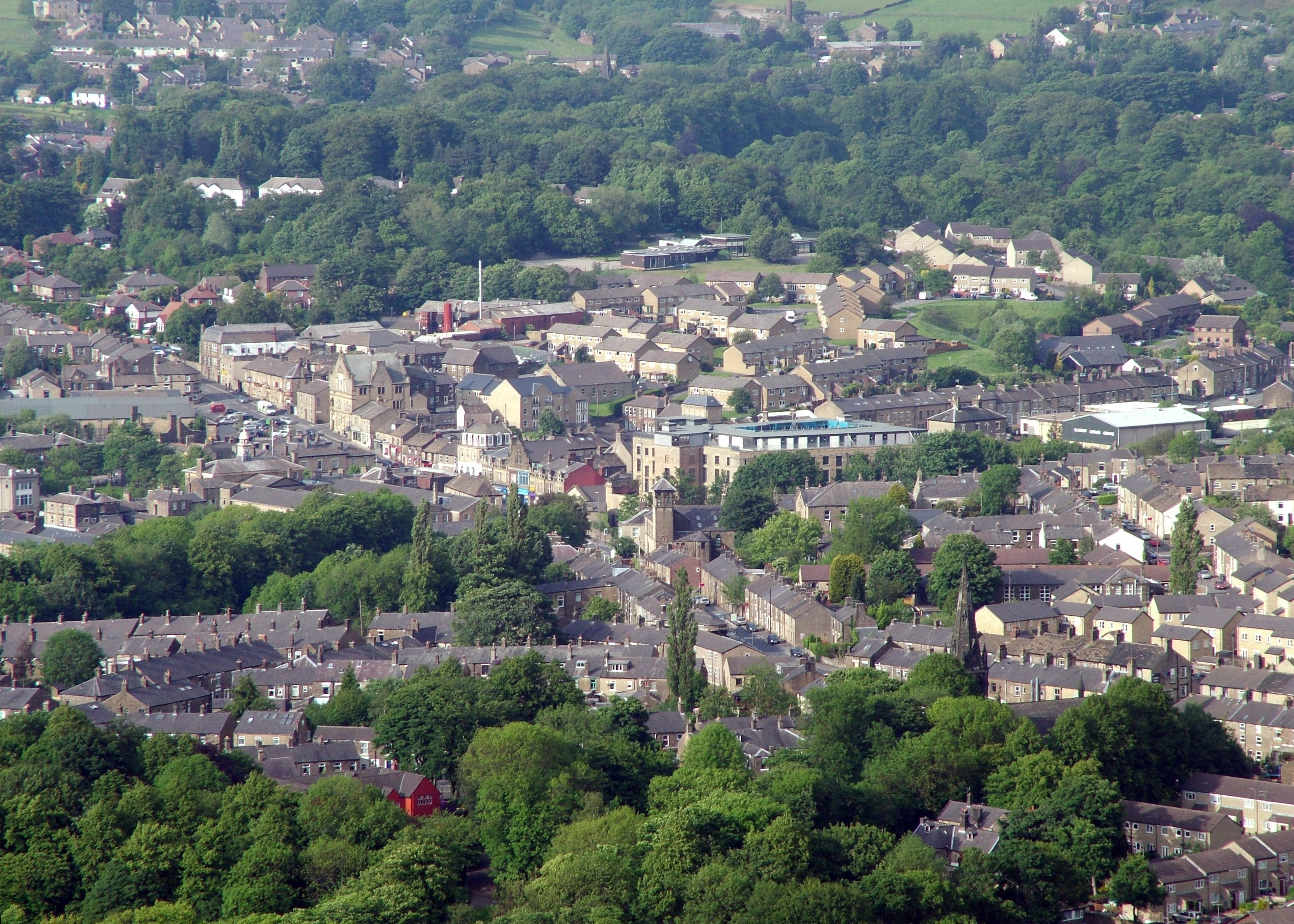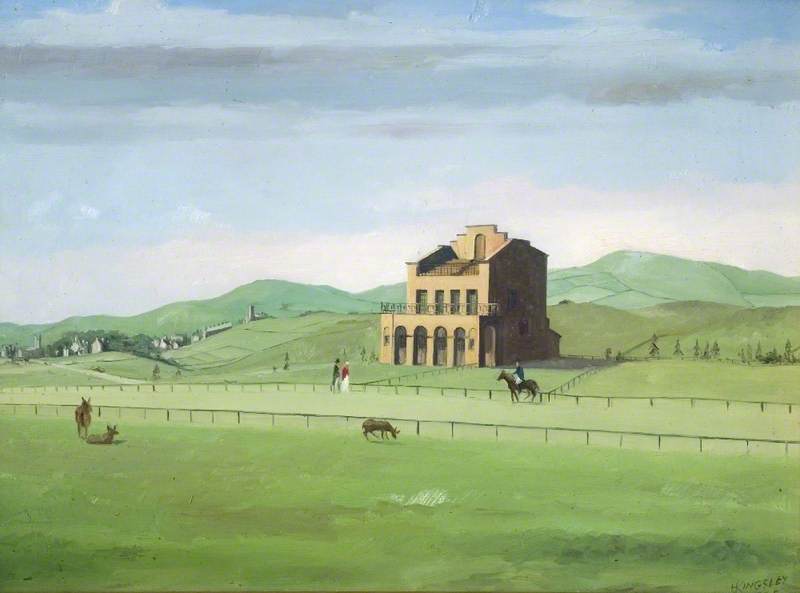|
Fairfield Halt Railway Station
Fairfield Halt was a railway station at Fairfield near Buxton, Derbyshire that was open between 1907 and 1939. The station was opened by the London & North Western Railway The London and North Western Railway (LNWR, L&NWR) was a British railway company between 1846 and 1922. In the late 19th century, the L&NWR was the largest joint stock company in the United Kingdom. In 1923, it became a constituent of the Lon ... (LNWR) on 16 December 1907 to serve the nearby Buxton Golf Club. Opening the station had been requested by the golf club committee and the local authority to attract more visitors who lived close to the LNWR's line between Manchester and Buxton. The station was unusual in that it only had one platform and was only served by trains heading to . In addition passengers were only allowed to alight from trains. Known at various times as simply Fairfield, Fairfield Halt and Fairfield Halt for Golf Links, the station closed at the outbreak of the Second World War. ... [...More Info...] [...Related Items...] OR: [Wikipedia] [Google] [Baidu] |
Buxton
Buxton is a spa town in the Borough of High Peak, Derbyshire, England. It is England's highest market town, sited at some above sea level."Buxton – in pictures" , BBC Radio Derby, March 2008, accessed 3 June 2013. also claims this, but lacks a regular market. It lies close to to the west and to the south, on the edge of the |
High Peak, Derbyshire
High Peak is a local government district with borough status in Derbyshire, England. The borough compromises high moorland plateau in the Dark Peak area of the Peak District National Park. The district stretches from Holme Moss in the north to Sterndale Moor in the south, and from Hague Bar in the west to Bamford in the east. The population of the borough taken at the 2011 Census was 90,892. The borough is unusual in having two administrative centres for its council, High Peak Borough Council; the offices are based in both Buxton and Glossop. The borough also contains other towns including Chapel-en-le-Frith, Hadfield, New Mills and Whaley Bridge. High Peak was the name of a hundred of the ancient county of Derbyshire covering roughly the same area as the current district. It may have derived its name from the ancient Forest of High Peak, a royal hunting reserve administered by William Peverel, a favourite of William I, who was based at Peak Castle. High Peak contains much ... [...More Info...] [...Related Items...] OR: [Wikipedia] [Google] [Baidu] |
Ordnance Survey National Grid
The Ordnance Survey National Grid reference system (OSGB) (also known as British National Grid (BNG)) is a system of geographic grid references used in Great Britain, distinct from latitude and longitude. The Ordnance Survey (OS) devised the national grid reference system, and it is heavily used in their survey data, and in maps based on those surveys, whether published by the Ordnance Survey or by commercial map producers. Grid references are also commonly quoted in other publications and data sources, such as guide books and government planning documents. A number of different systems exist that can provide grid references for locations within the British Isles: this article describes the system created solely for Great Britain and its outlying islands (including the Isle of Man); the Irish grid reference system was a similar system created by the Ordnance Survey of Ireland and the Ordnance Survey of Northern Ireland for the island of Ireland. The Universal Transverse Merca ... [...More Info...] [...Related Items...] OR: [Wikipedia] [Google] [Baidu] |
London & North Western Railway
The London and North Western Railway (LNWR, L&NWR) was a British railway company between 1846 and 1922. In the late 19th century, the L&NWR was the largest joint stock company in the United Kingdom. In 1923, it became a constituent of the London, Midland and Scottish (LMS) railway, and, in 1948, the London Midland Region of British Railways: the LNWR is effectively an ancestor of today's West Coast Main Line. History The company was formed on 16 July 1846 by the amalgamation of the Grand Junction Railway, London and Birmingham Railway and the Manchester and Birmingham Railway. This move was prompted, in part, by the Great Western Railway's plans for a railway north from Oxford to Birmingham. The company initially had a network of approximately , connecting London with Birmingham, Crewe, Chester, Liverpool and Manchester. The headquarters were at Euston railway station. As traffic increased, it was greatly expanded with the opening in 1849 of the Great Hall, designed by P ... [...More Info...] [...Related Items...] OR: [Wikipedia] [Google] [Baidu] |
London, Midland & Scottish Railway
The London, Midland and Scottish Railway (LMSIt has been argued that the initials LMSR should be used to be consistent with LNER, GWR and SR. The London, Midland and Scottish Railway's corporate image used LMS, and this is what is generally used in historical circles. The LMS occasionally also used the initials LM&SR. For consistency, this article uses the initials LMS.) was a British railway company. It was formed on 1 January 1923 under the Railways Act of 1921, which required the grouping of over 120 separate railways into four. The companies merged into the LMS included the London and North Western Railway, Midland Railway, the Lancashire and Yorkshire Railway (which had previously merged with the London and North Western Railway on 1 January 1922), several Scottish railway companies (including the Caledonian Railway), and numerous other, smaller ventures. Besides being the world's largest transport organisation, the company was also the largest commercial enterprise ... [...More Info...] [...Related Items...] OR: [Wikipedia] [Google] [Baidu] |
Fairfield, Derbyshire
Fairfield is a district of Buxton in the High Peak of Derbyshire. The historic medieval village of Fairfield was centred around a village green (known as 'the Green'). Location Fairfield is located on the A6 road half a mile to the north east of Buxton's town centre, 340m above sea level. Fairfield is at the head of the narrow dry gorge of Cunningdale, which is part of the Wye Valley Site of Special Scientific Interest (SSSI). History The name Fairfield derives from the Germanic meaning 'fair open land', because of its good volcanic soil for pasture. Cistercian monks and Benedictine nuns founded monastic granges at Fairfield in the early 1200s AD (Nunsfield Farm still exists). In the 13th century Fairfield (being north of the River Wye) was within the Royal Forest of Peak, a hunting ground for the king. Fairfield was a chapelry in the parish of Hope (whereas Buxton was in the Bakewell parish). Fairfield and Buxton shared a medieval corn mill on the Wye in Mill Dale, where A ... [...More Info...] [...Related Items...] OR: [Wikipedia] [Google] [Baidu] |
Buxton Line
The Buxton line is a railway line in Northern England, connecting Manchester with Buxton in Derbyshire. Passenger services on the line are currently operated by Northern Trains. History The line has its origins with the Stockport, Disley and Whaley Bridge Railway, which the LNWR built to connect with the Cromford and High Peak Railway at . In 1863, it built an extension from Whaley Bridge, via to Buxton. This forestalled the Manchester, Sheffield and Lincolnshire Railway's plans for the area, and also the Midland Railway's attempts to reach Manchester. The latter two railways were forced to combine forces in a line following the LNWR, but north of it, through New Mills (part of what is now known as the Hope Valley line), branching at Millers Dale. As a result, Buxton, one of the largest towns in the Peak District, never achieved mainline status. The LNWR had offered the use of the line but, with its climb through Dove Holes, the Midland did not consider it useful for expres ... [...More Info...] [...Related Items...] OR: [Wikipedia] [Google] [Baidu] |
Manchester Courier
The ''Manchester Courier'' was a daily newspaper founded in Manchester, England, by Thomas Sowler; the first edition was published on 1 January 1825. Alaric Alexander Watts was the paper's first editor, but remained in the position for only a year. The newspaper circulation area was in Lancashire, Cheshire, Yorkshire, Shropshire, Cumberland, Staffordshire, and North Wales. An advocate of commerce and agriculture and a supporter of the Church of England, the paper's initial agenda was to act as a counterpoint to the reforms being advocated by ''The Manchester Guardian'', and in particular to proposals for the emancipation of Catholics. It provided Hugh Stowell, rector of St Stephen's Church in Salford, with a platform to "wage war" on any group dissenting from the orthodox views of the Anglican Church, such as Catholics and Jews, but also including Unitarians, whom Stowell doubted even had the right to call themselves Christians. The daily ''Manchester Evening Mail'', establishe ... [...More Info...] [...Related Items...] OR: [Wikipedia] [Google] [Baidu] |
British Newspaper Archive
The British Newspaper Archive web site provides access to searchable digitized archives of British and Irish newspapers. It was launched in November 2011. History The British Library Newspapers section was based in Colindale in north London, until 2013, and is now divided between the St Pancras and Boston Spa sites. The library has an almost complete collection of British and Irish newspapers since 1840. This is partly because of the legal deposit legislation of 1869, which required newspapers to supply a copy of each edition of a newspaper to the library. London editions of national daily and Sunday newspapers are complete back to 1801. In total, the collection consists of 660,000 bound volumes and 370,000 reels of microfilm containing tens of millions of newspapers with 52,000 titles on 45 km of shelves. After the closure of Colindale in November 2013, access to the 750 million original printed pages was maintained via an automated and climate-controlled storage facilit ... [...More Info...] [...Related Items...] OR: [Wikipedia] [Google] [Baidu] |
Former London And North Western Railway Stations
A former is an object, such as a template, gauge or cutting die, which is used to form something such as a boat's hull. Typically, a former gives shape to a structure that may have complex curvature. A former may become an integral part of the finished structure, as in an aircraft fuselage, or it may be removable, being using in the construction process and then discarded or re-used. Aircraft formers Formers are used in the construction of aircraft fuselage, of which a typical fuselage has a series from the nose to the empennage, typically perpendicular to the longitudinal axis of the aircraft. The primary purpose of formers is to establish the shape of the fuselage and reduce the column length of stringers to prevent instability. Formers are typically attached to longerons, which support the skin of the aircraft. The "former-and-longeron" technique (also called stations and stringers) was adopted from boat construction, and was typical of light aircraft built until the ad ... [...More Info...] [...Related Items...] OR: [Wikipedia] [Google] [Baidu] |
Railway Stations In Great Britain Opened In 1907
Rail transport (also known as train transport) is a means of transport that transfers passengers and goods on wheeled vehicles running on rails, which are incorporated in tracks. In contrast to road transport, where the vehicles run on a prepared flat surface, rail vehicles (rolling stock) are directionally guided by the tracks on which they run. Tracks usually consist of steel rails, installed on sleepers (ties) set in ballast, on which the rolling stock, usually fitted with metal wheels, moves. Other variations are also possible, such as "slab track", in which the rails are fastened to a concrete foundation resting on a prepared subsurface. Rolling stock in a rail transport system generally encounters lower frictional resistance than rubber-tyred road vehicles, so passenger and freight cars (carriages and wagons) can be coupled into longer trains. The operation is carried out by a railway company, providing transport between train stations or freight customer facil ... [...More Info...] [...Related Items...] OR: [Wikipedia] [Google] [Baidu] |







